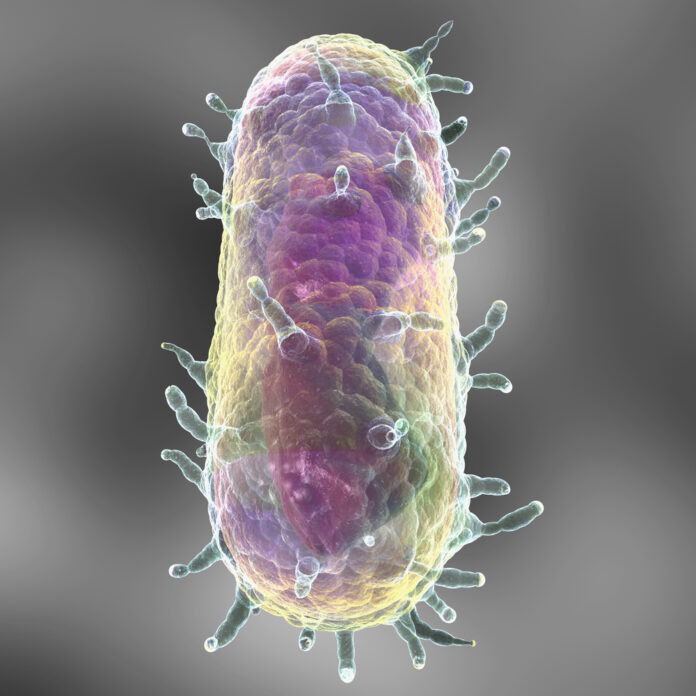Medical diseases have existed since ancient times. We’ve read about the horrors of the bubonic plague in history lessons, but did you know that even the plague technically still exists today?
Over time, modern medicine has eradicated some of the most devastating diseases in the U.S., like smallpox, polio, rubella, malaria, and diphtheria. However, diseases like tuberculosis (TB) and the mumps do continue to exist. While it may surprise you that the following five diseases still exist today, we have come along way to treating them as well.
1. Leprosy
Mycobacterium leprae (Credit: Kateryna Kon/Shutterstock)
According to the Centers for Disease Control and Prevention (CDC), approximately 225 Americans are diagnosed annually with leprosy, otherwise known as Hansen’s Disease. Mycobacterium leprae causes the bacterial infection, leprosy, and primarily affects the nerves and skin. It causes skin discoloration, nodules, and burning, which can lead to disfigurement if not treated. Numbness can also occur, typically in the hands and feet.
At one time, people with leprosy were isolated in colonies — due to the fear that it was easily transmitted. But we have since learned that prolonged close contact with an infected person is required for the disease to spread. Another route of transmission is from armadillos to humans. Most people are immune to leprosy and there’s an effective combination of antibiotic treatment for those who do contract it.
Read More: Leprosy Cases Are Rising in the U.S.
2. Tuberculosis
Mycobacterium tuberculosis (Credit: nobeastsofierce/Shutterstock)
While TB dates back 9,000 years, the disease still kills over a million people each year across the world. In 2022, about 8,000 people in the U.S. were diagnosed with tuberculosis — and another 13 million were classified as having latent tuberculosis.
Mycobacterium tuberculosis causes this disease, which has symptoms like a cough, chest pain, fever, and loss of appetite. TB is transmitted through the inhalation of droplets released from an infected person who coughs or talks.
There are two types of testing methods for TB, a skin test and a blood test. If someone is found to have an active case of TB, there is a treatment regimen of antibiotics. Typically, these are taken for months.
Read More: What Is the Drug Bedaquiline and Why Is It Important for Those With Tuberculosis?
3. The Mumps
Paramyxovirus (Credit: Corona Borealis Studio/Shutterstock)
A virus belonging to the Paramyxoviridae family causes the mumps. And although the disease still exists, cases have been reduced by 99 percent since the mumps vaccine program started in the late 1960s.
When someone is infected with mumps, it can take between two to three weeks until symptoms emerge — including a swollen, painful jaw, puffy cheeks, tiredness, weight loss, and fever. Mumps is spread through respiratory droplets or saliva. It can be transmitted through sneezing, talking, or coughing. It can also be spread by sharing utensils or drinking from the same cup as an infected person.
While there is no cure for mumps, treatment usually includes rest, fluids, and pain relief. Typically, symptoms usually subside in about 5 days.
Read More: 6 Respiratory Illnesses That Could Mean Trouble for Your Lungs
4. Whooping Cough
Bordetella pertussis (Credit: Kateryna Kon/Shutterstock)
There are more than 10,000 cases of whooping cough each year in the U.S. A bacterial based disease, whooping cough is also called pertussis — named after the bacteria Bordetella pertussis – and affects the lungs and airway.
Symptoms most notably include a severe, intense cough that eventually causes people to inhale, which results in the “whooping” sound. Not everyone with whooping cough will develop the characteristic whooping sound. Other symptoms include runny nose, fever, and nasal congestion.
Treatment includes antibiotics and vaccines, but you can still catch whooping cough even if vaccinated. Usually when this happens, symptoms are usually milder.
Read More: Why Are Viruses More Active In The Winter?
5. Plague: The Black Death
(Credit: MichaelTaylor/Shutterstock)
The bacterium, Yersinia pestis, causes the plague and there are two forms called bubonic and pneumonic. The bubonic plague is the most common. The black plague killed about 25 million people in Europe during Middle Ages — and currently affects about five to 15 people each year in the U.S.
Symptoms include swollen lymph nodes in the groin, armpits, or neck; high fever; chills, and muscle cramps. The plague can spread through an infected flea that is connected to a pet or small wild animal.
When the plague is suspected, people are usually hospitalized and immediately treated with antibiotics. Sometimes they are isolated. Support measures include I.V. liquids, oxygen, and breathing support. The plague is life threatening and considered a potential bioweapon.
Read More: Scientists Reveal the Black Death’s Origin Story
Article Sources
Our writers at Discovermagazine.com use peer-reviewed studies and high-quality sources for our articles, and our editors review for scientific accuracy and editorial standards. Review the sources used below for this article:
Allison Futterman is a Charlotte, N.C.-based writer whose science, history, and medical/health writing has appeared on a variety of platforms and in regional and national publications. These include Charlotte, People, Our State, and Philanthropy magazines, among others. She has a BA in communications and a MS in criminal justice.
Source : Discovermagazine






